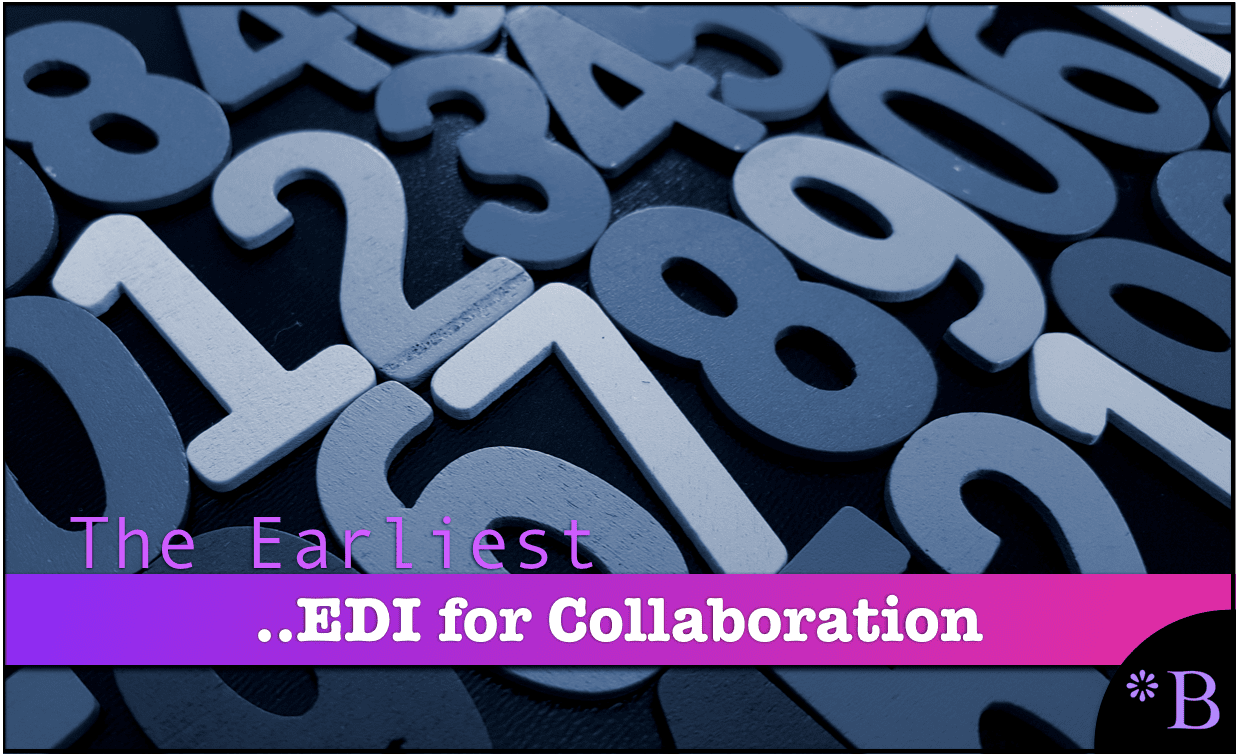How to Understand The Earliest EDI
Executive Summary
- The earliest EDI tells an interesting story about the usage of EDI.
- How EDI messages were structured and the implications.

Introduction
Electronic Date Interchange or, more commonly, EDI is a structured way for companies to communicate with one another. EDI is also a document standard as well as how the data is transmitted. EDI documents can be transferred between companies with anything from FTP to email – and thus, in this way, EDI is misnamed because EDI does not so much define the method of transmission as it does the format of the documentation. EDI has different document formats for different business objects. A full list of these business objects is listed at this link. One can view the EDI transaction 851 at this link:
However, I copied it below:
EDI File Format Example
- ISA*01*0000000000*01*ABCCO *12*4405197800 *01*999999999 *101127*1719*U*00400*000003438*0*P*>
- GS*PO*4405197800*999999999*20101127*1719*1421*X*004010VICS
- ST*850*000000010
- BEG*00*SA*08292233294**20101127*610385385
- REF*DP*038
- REF*PS*R
- ITD*14*3*2**45**46
- DTM*002*20101214
- PKG*F*68***PALLETIZE SHIPMENT
- PKG*F*66***REGULAR
- TD5*A*92*P3**SEE XYZ RETAIL ROUTING GUIDE
- N1*ST*XYZ RETAIL*9*0003947268292
- N3*31875 SOLON RD
- N4*SOLON*OH*44139
- PO1*1*120*EA*9.25*TE*CB*065322-117*PR*RO*VN*AB3542
- PID*F****SMALL WIDGET
- PO4*4*4*EA*PLT94**3*LR*15*CT
- PO1*2*220*EA*13.79*TE*CB*066850-116*PR*RO*VN*RD5322
- PID*F****MEDIUM WIDGET
- PO4*2*2*EA
- PO1*3*126*EA*10.99*TE*CB*060733-110*PR*RO*VN*XY5266
- PID*F****LARGE WIDGET
- PO4*6*1*EA*PLT94**3*LR*12*CT
- PO1*4*76*EA*4.35*TE*CB*065308-116*PR*RO*VN*VX2332
- PID*F****NANO WIDGET
- PO4*4*4*EA*PLT94**6*LR*19*CT
- PO1*5*72*EA*7.5*TE*CB*065374-118*PR*RO*VN*RV0524
- PID*F****BLUE WIDGET
- PO4*4*4*EA
- PO1*6*696*EA*9.55*TE*CB*067504-118*PR*RO*VN*DX1875
- PID*F****ORANGE WIDGET
- PO4*6*6*EA*PLT94**3*LR*10*CT
- CTT*6
- AMT*1*13045.94
- SE*33*000000010
- GE*1*1421
- IEA*1*000003438
As you can see, the EDI format is not designed to be read by humans. One can, of course, if one reads the description, but EDI is intended for pure computer-to-computer communication. When a company has received this file, it is mapped and transformed and brought into an application that can make sense. For instance, this is a purchase order, so the information contained would go through the EDI mapping program and then be brought into the ERP system as the purchase order transaction. These messages can be sent from one company to another at any time and can appear within the receiving ERP system as if a company employee itself typed them in. This EDI format is always the same and is an agreed-up standard controlled by EDIFACT, which is a standard developed by the United Nations. EDI not only allows messages to be sent to different companies but also between companies in different countries.
How EDI Messages Were Structured
EDI messages are hierarchical. This means that, in the previous example, multiple purchase orders can be sent as part of one EDI message, and the mapping program knows that all of the purchase orders are part of one overall document. This allows for a list of purchase orders to be sent in a batch. Therefore, if we imagine purchase orders being created by one company throughout the day, at some point, the purchase orders can be batched and then EDI messages sent to each of the suppliers. It might look something like this:
- 118 Purchase Order for Supplier A
- 20 Purchase Orders for Supplier B
- 3 Purchase Orders for Supplier C
Each set of purchase orders would be sent out with a single EDI document each for Supplier A, Supplier B, and Supplier C.
EDI began to become popular in roughly the early to mid-1980s. EDI was a much more automated way of exchanging information than what had preceded it, primarily the fax. It also cut humans out of the information exchange loop because people had mediated all other business-to-business object communication in the past. For instance, fax is human to human communication. The data must be printed, then faxed, and then these values typed back into a system at the EDI recipient. EDI was a tremendous improvement in efficiency because the computers could send each other repeated EDI messages without any human involvement, setting up the system and maintaining the system. This had many advantages, including cost reduction, improvement in accuracy (no more errors from rekeying in information), and speed. While EDI is now roughly 30-year-old, what has been surprising is how strong the EDI standard has been. The majority of system-to-system collaboration between companies is still managed with EDI. EDI was followed with XML, both machine and human-readable document format, which has self-describing tags and is a relative of HTML.
References
August 1, 2013
https://en.wikipedia.org/wiki/Electronic_data_interchange